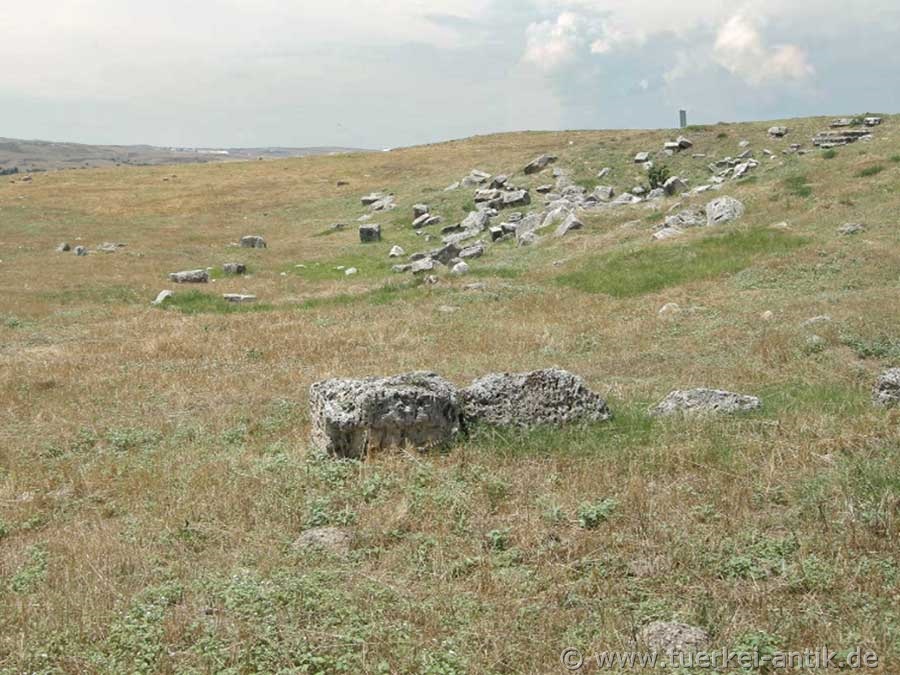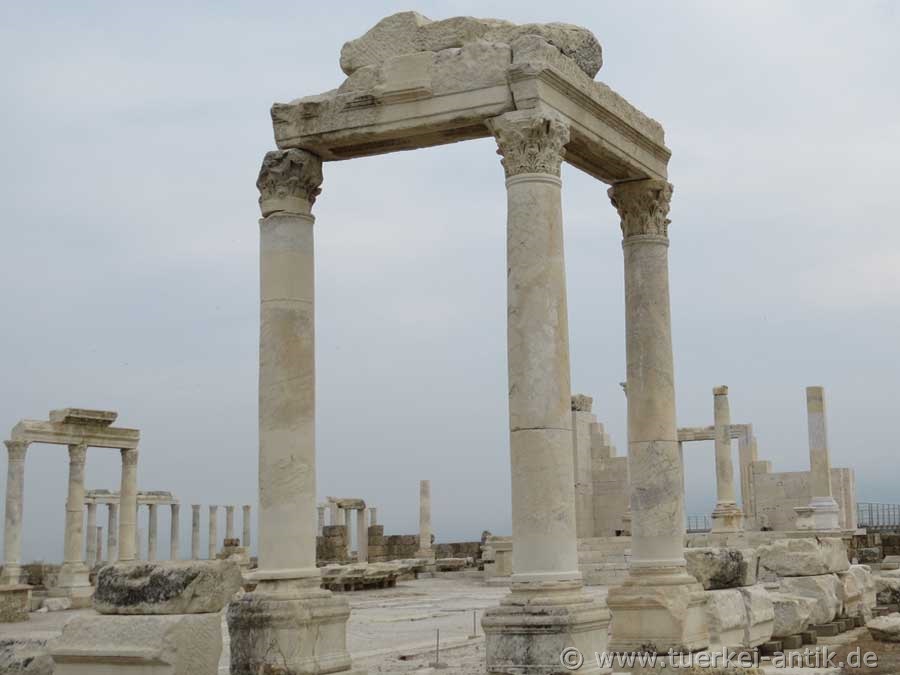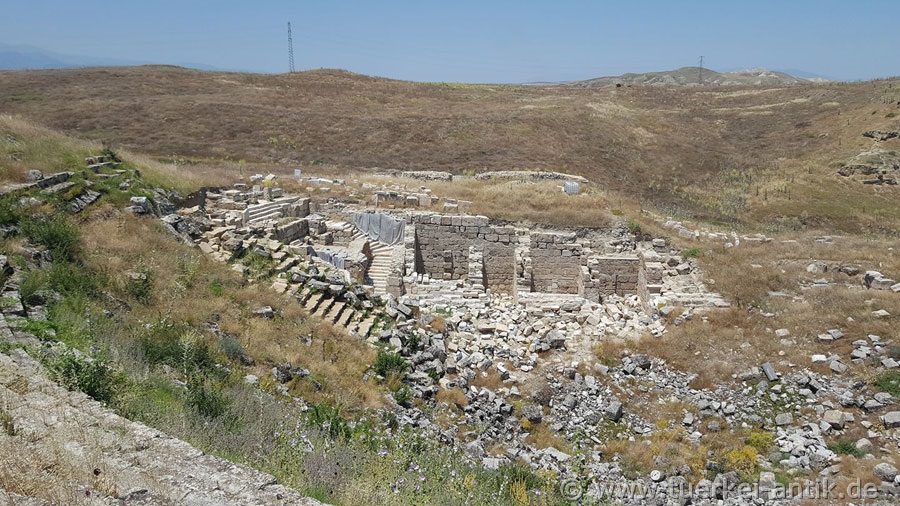 |
| Laodicea ad Lycum in Phrygia | |||
|
|
|
||
| The Pillars of Portico in the "Holy District". | |||
|
Laodicea ad Lycum (English: Laodicea on the Lycus) was an ancient city in the region of Phrygia. It is located 6 km north of today's Denizli and 10 km south of Pamukkale, or Hierapolis, on the Lykos river (today Çürüksu Çayı), a tributary of the meander. The first settlements in the Denizli area date back to around 4000 BC. The area was conquered or settled by Hittites, Phrygians, Greeks, Romans, Seljuks and Mongols. |
|||
|
|
|||
| The main street | |||
|
Laodicea was founded between 261 and 253 BC instead of an older settlement called Diospolis by Antiochos II and named after his wife Laodike. In Roman times, the city was regarded as an economic centre. Marcus Tullius Cicero was in his year as proconsul in Cilicia in 51/50 B.C. responsible among other things for the jurisdiction of the eight judicial districts of his province. This also applies to Laodicea, the centre of a judicial district in the province of Asia. For this purpose he stayed in Laodicea from 13 February to 15 March of 50 BC. |
|||
|
|
|||
| The Bouleuterion (town hall) | |||
|
The Bouleuterion, the town hall, once so important for the city, has not yet been excavated. Today only a few seat stones can be seen next to the hollow in the back of a hill. It was built under Emperor Hadrian (117-138 AD). It had a capacity of 500 - 600 people. It had a diameter of 35 m. The cavea had a diameter of 30 meters. |
|||
|
|
|||
| The Temple "A" | |||
|
In the 1st century AD Laodicea was badly devastated by earthquakes twice, under the emperors Tiberius and Nero, but recovered by its own efforts. |
|||
|
|
|||
| Piazza with Stoa of Temple "A" | |||
|
In Roman times Laodicea was an important cotton growing area. Laodicea is close (8 km) to the thermal baths of Hierapolis (today Pamukkale). A certain red plant root could be diluted with the water from Hierapolis and then dyed black substances purple. More and more purple fabrics were produced in the Roman Empire in Laodikeia, e.g. the purple sails of Cleopatra.
|
|||
|
|
|||
|
The North Theatre |
|||
|
|
|||
|
Laodicea had two theatres.
|
|||
|
|
|||
|
|
|||
| The Older West Theatre in 2014 | |||
|
|
|||
|
|
|||
|
The Older West Theatre in 2017 |
|||
|
|
|||
|
The smaller, originally Hellenistic theatre was also completely built on the slope of the city hill. The stage house was 6-7 meters high. The auditorium is divided into 9 sections (kerkides) with seven staircases. The 23 rows of lower tier seats were made of marble, while the upper 19 rows were made of travertine. The theatre was used until the 7th century AD. In the course of time it experienced various repairs, mostly required by earthquakes. For example, the earthquakes of 60 and 494 AD caused considerable damage. |
|||
|
|
|||
|
|
|||
|
The Portico in the Holy District |
|||
|
|
|||
|
The holy district had an extension of 250 x 100 meters. The whole area was probably covered. |
|||
|
|
|||
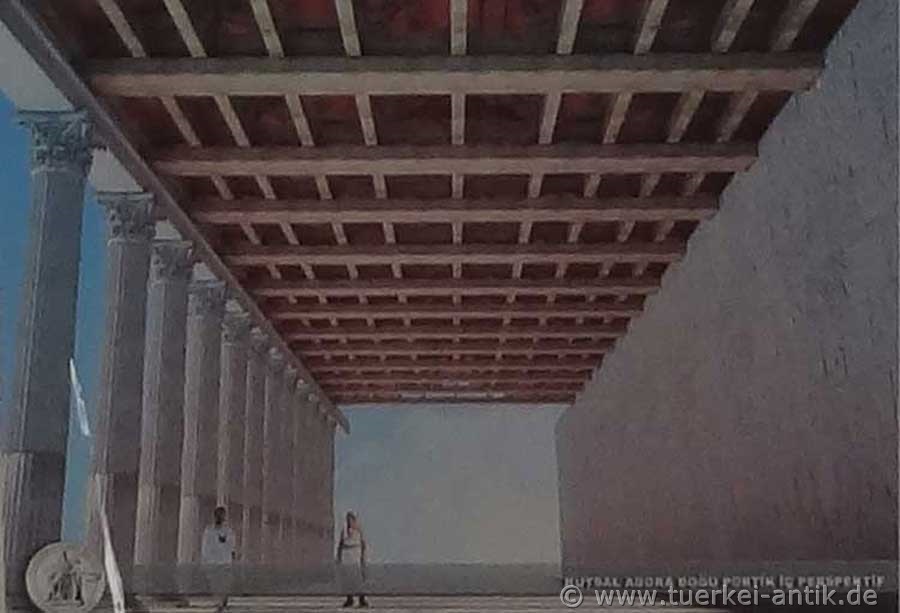 |
|||
| The portico (detail on the inscription label) | |||
|
|
|||
|
One of the oldest Christian churches has been uncovered in recent years during excavations at the University of Denizli under the direction of Celal Şimşek Remains of mosaics and frescoes and coins dating from the early 4th century have been found on the 2000 square metres of floor space. A baptismal font embedded in the floor with stairs on two sides made the mass baptisms usual at this time possible. In the years 363-364 the Council of Laodicea took place there. In the Middle Byzantine period, Laodicea was part of Thracesion (a Byzantine administrative unit), but lost all significance after an earthquake in 494. Unfortunately, access to the interior of the church is not permitted. |
|||
|
|
|||
| The West-Baths | |||
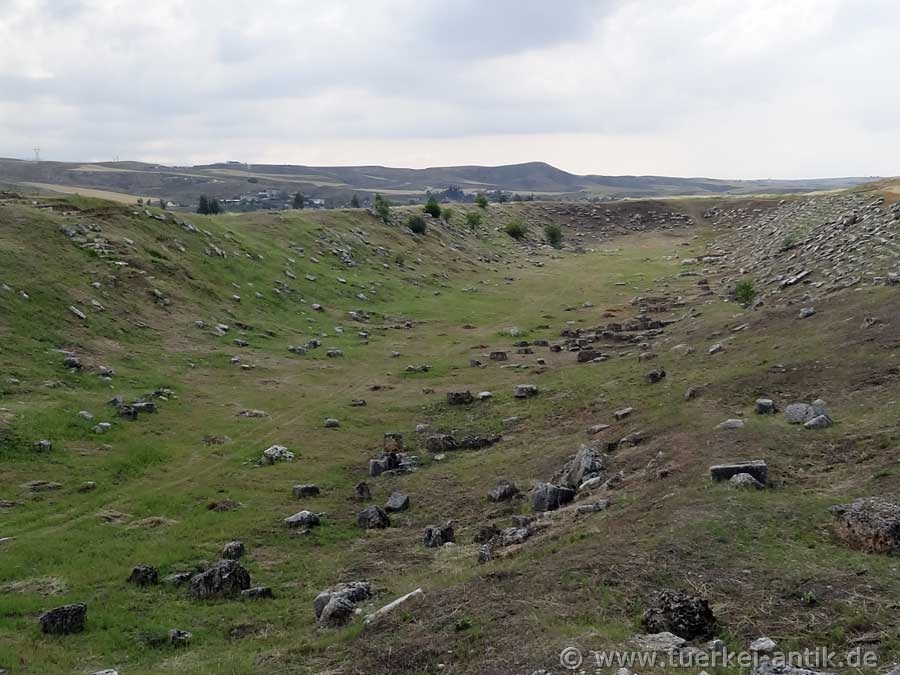 |
|||
| The Stadium | |||
|
The stadium of Laodicea was integrated into a natural depression at the southern end of the city under Vespasian (Roman emperor from 69-79 AD) or Titus (79-81 AD). Remains of the rows of seats have survived over the entire length of the 280-meter-long and almost 70-meter-wide stadium. It had a capacity of 20 - 25,000 spectators. |
|||
| Photos: @chim, Monika P., Graeme Patrick Houlden | |||
| Translation aid: www.DeepL.com/Translator | |||
| Source: Wikipedia and others | |||
|
|
|||

